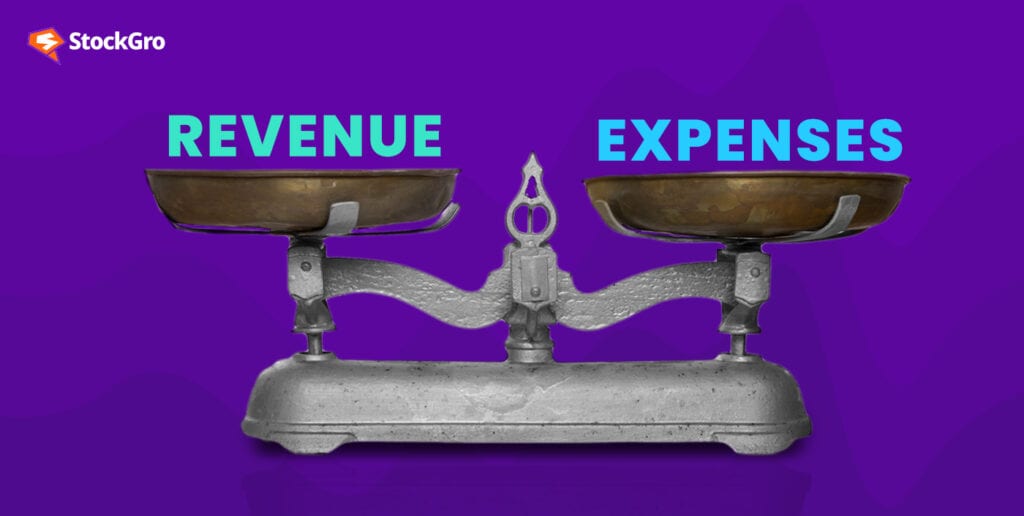
Revenue expenditure directly contributes to daily operations, making it the lifeblood of any business. It is essential for sustaining business activities and ensuring smooth functioning by maintaining day-to-day operations.
Since it encompasses costs incurred to generate revenue in the short term, without proper allocation, a business might struggle to deliver its products or services and maintain competitiveness, resulting in a potential decline in market share.
Here is the exploration for revenue expenditures – how they are crucial for maintaining competitiveness and growth. Understand its management and taxability benefiting companies.
What is revenue expenditure?
The following are the crucial aspects of revenue expenditure:
- Non-Capital in Nature: Revenue expenditures are used to maintain the current assets. They are not used to buy buildings, land, machinery, or other capital assets to enhance their value. Therefore, they are called non-capital expenses.
- Accounting Treatment: In financial statements, revenue expenditures are recorded as expenses and subtracted from the total revenue to determine the net income/loss for an accounting period. They are stated on the income statement of the company. However, they are not recorded on the Balance Sheets.
- Recurring Expenses: Revenue expenditures are repetitive as they are required to ensure continuous operations. Businesses allocate funds for these expenses in their budgets during an accounting period.
You may also like: EBITDA explained: Definition, calculation, significance, and more
Types of revenue expenditure
Revenue expenditure covers a wide range of expenses. Recognising the kind of revenue expenditure is crucial to ensure accurate financial reporting. Following are types of revenue expenditure:
Direct expense
Direct expenses are attributed to a specific product, service, or department and can be traced easily and directly. These expenses are the costs incurred in a production process or direct service provision.
They are proportional to the level of production or service. In accounting, these expenses are typically allocated to specific cost centres, products, or projects for easy total cost calculations associated with varied business activities.
Revenue expenditure examples under direct expenses are:
- raw materials,
- wages of workers involved directly in production,
- manufacturing supplies,
- costs to sales campaigns or marketing initiatives,
- travel costs,
- freight or shipping charge, etc.
Also Read: Unlocking the power of preference shares
Indirect expenses
Indirect expenses, often referred to as overhead expenses, are the expenses indirectly tied to the production or service provision processes and incurred to support the overall functioning of the business.
These expenses are usually incurred when the finished product or services are sold or distributed. These expenses are typically semi-variable and do not incur in direct proportion to production or sales volume.
Companies allocate funds for indirect expenses using predetermined overhead rates, ensuring a fair share of these expenses. Indirect expenses include:
- rent and taxes
- interest
- salaries of administrative staff and management,
- utilities,
- depreciation,
- office supplies,
- General advertising and promotional expenses
- maintenance costs of equipment or other shared facilities,
- miscellaneous expenses, etc.
Here is a table for a quick glance at the key differences between direct and indirect revenue expenditures:
| Factors | Direct Revenue Expenses | Indirect Revenue Expenses |
| Attribute and Relationship | Directly related to specific products or operational activities | Expenses supporting overall business operations and indirectly attributed to operational activities |
| Variability | Variable in nature | Fixed or semi variable |
| Examples | Production-specific costs, raw materials, direct labour wages | Fixed or semi-variable |
| Impact on Profitability | Impacts profitability directly through direct contribution to revenue | Impacts profitability indirectly by influencing overall operational efficiency |
| Calculation and Tracking | Straightforward | Requires allocation methods |
Significance of revenue expenditure
Following are the impacts of revenue expenses indicating their significance in various fields:
- Financial statements: Revenue expenditures are deducted from a company’s revenue for net profit calculations. Therefore, they directly impact the income statement of businesses.
- Profitability: Companies with effective management of revenue expenditure can experience higher profitability as it contributes to higher operational efficiency and leads to increased profitability.
- Financial planning and budgeting: Accurate estimation and allocation of funds to different categories under revenue expenditures help businesses create realistic budgets. A well-structured budget enables companies to make strategic decisions for further financial planning.
- Functionality: Revenue expenditures cover essential costs for smooth business operations. Proper allocation is crucial to revenue expenses to avoid any operation disruption.
- Investor confidence: Stakeholders want to invest in a company that can utilise its resources efficiently to drive growth and generate sustainable revenue. Prudent revenue expenditure management can enhance investor confidence in a company.
Also Read: A beginner’s guide to the share market
Differentiating capital expenditure and revenue expenditure
Capital expenditures (CAPEX) refers to expenses made by a company to acquire fixed assets for revenue generation over a longer period (for more than one accounting period).
On the other hand, revenue expenditures are the ongoing operating expenses during an accounting period to run the daily business operations and effectively maintain their profitability.
Other distinctions are as follows:
- Nature of asset: While capital expenditure relates to acquiring fixed assets, revenue expenditures are related to acquiring current or floating assets.
- Frequency: While revenue expenditure is usually recurring, the nature of capital expenditure is usually non-recurring.
- Matching: Capital expenditures are not matched against capital receipts. On the other hand, for income determination, it is crucial to match revenue expenditures against revenue receipts.
- Timing to incur expenses: While revenue expenditures are incurred only after the business commencement, capital expenditures may be incurred even before the starting of business.
- Accounting treatment: Capital expenditure is capitalised. Instead of being reported as an expense immediately on the income statement, it is recorded on the balance sheet as an asset.
The cost of the asset is spread over multiple accounting periods and gradually recognised as an expense over its lifetime.
On the other hand, revenue expenditure is transferred to the Trading or Profit and Loss Account.
Tax treatment of revenue expenditures
In India, revenue expenditures are fully deductible from the gross income of the current assessment year in which they are incurred to calculate taxable income.
This deduction helps companies to reduce taxable income and ultimately reduce the tax liability. To claim the deduction, businesses must have proper records supporting the legitimacy of the expenses, such as invoices, bills, receipts, etc.
The closing
Revenue expenditure, encompassing essential costs, is the backbone of business operations, allowing companies to sustain daily activities and contribute to profitability.

